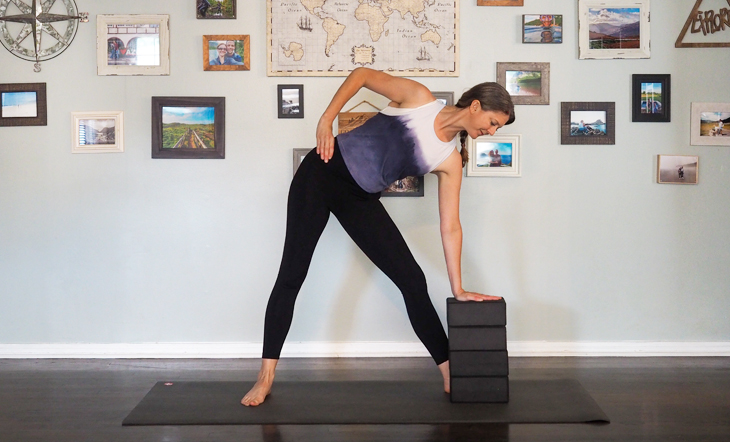The Transformative Power of Wise and Compassionate Action
Zen teacher and relational psychoanalyst Joseph Bobrow discusses his new book and vision of expanding the archetype of the enlightened person. The post The Transformative Power of Wise and Compassionate Action appeared first on Tricycle: The Buddhist Review.

Maybe we could start with your background. How did Zen, psychotherapy, and activism come together for you, given that they play such an important role in your teaching? Social activism was the mother’s milk in which I was reared. Both my parents were activists, and so that just became part of me. We were going to change the world, we thought. Growing up, there was no indication that I would be interested in spiritual practice (the dictum in our home was that religion was the opiate of the people), but a psychology professor my freshman year at CCNY included a book by Krishnamurti in the optional reading list. It was as if it were speaking directly to me. “Truth is a pathless land,” Krishnamurti wrote, adding that all accrued knowledge must be relinquished if we wish to encounter it. This resonated with me, a young man wanting to break free, internally and outwardly.
Years later, on a walkabout in the Moroccan desert, I had an experience in which I felt a profound connection with all things—a vastness that I couldn’t put into words. Later, while on Maui for a family reunion, I walked by a funky Japanese gate with cars parked on the grass nearby. I didn’t know much about Zen, but I wandered by there again another day and the old gardener told me it was the Maui Zendo and invited me to come for sitting. I took him up on the invitation and was surprised to see that the gardener was the Roshi—Aitken Roshi. I was impressed; to me he was really living a Zen life. I decided to get involved and eventually moved in.
Later, I had the opportunity of a lifetime to start a nursery school on zendo property, and that led me to become a therapist. Then, during a conference of the Association for Humanistic Psychology in Honolulu that I accompanied Roshi to, I met a man who was to become my analyst and mentor. The three disciplines were therefore intertwining in a fortuitous way from the beginning.
In your book, A True Person of No Rank: Awakening Buddha’s Dream to Save the World, you’ve reframed the three-fold training of samadhi or dhyana (concentration or meditation), sila (ethics) and prajna (wisdom), as peace, freedom, and justice. Can you talk a little bit about the ways this framework informs your work? One way was through the trauma programs I developed for veterans and their families beginning in 2008. The Coming Home Project was a nonprofit community service of our Zen group, Deep Streams Institute. We offered interdisciplinary retreats for veterans and their families and caregivers. We found that the deepest and most painful kind of trauma veterans felt had moral and ethical roots. Many of them had done or countenanced things that ran counter to their emotions and ethical compass, and they were left with tremendous shame, guilt, and self-loathing. They also sometimes felt bitter about having been let down by their superiors and their country. So, on the collective register, helping veterans and families transform traumatic suffering was in part a way of responding to injustice by creating an unconditionally welcoming and “just” setting.
Sometime earlier, it had occurred to me that sila referred not only to the formal precepts, but also to awakened activity—a spontaneous responsiveness based on our internalized practice of goodness. Concentration is a stepping-stone to peace and rest. Wisdom unfolds as the self is forgotten and we wake up to the intrinsic Buddhahood of all beings. This brings a kind of freedom. Ideally, one’s actions then express the natural fruit of aligned practice and benevolent conduct, both of which are characterized by a radical sense of equality that doesn’t blur differences but is wildly diverse. That’s why we decided to create a community setting where war veterans and families could touch peace, so they would feel freer to open their hearts and engage these issues of healing and justice with their fellow veterans.
You use the term “experience-near.” What does it mean? Oh, it originates from psychotherapy. In the past, psychoanalysis could be quite intellectual and patriarchal. The patient would talk, and the analyst would provide insight through an interpretation. “Experience-near,” on the other hand, is about listening closely—with the whole self—to the patient’s experience without superimposing your theories.
Marion Milner, a British psychoanalyst, was doing this in the 1930s, well before “experience-near” became a thing. She would start a therapy session by becoming aware of her bodily sensations, then she endeavored to listen to the themes and the content of what the patient was saying while remaining aware of the shifts in her own bodily awareness. And she was amazed to see that people stopped being compliant and intellectual. They started digging into their experience, finding rich metaphors, and engaging with her more directly.
Can you talk a bit about absorption, realization, and personalization? My teacher used to speak of the path as a spiral of practice, realization, and actualization. By personalization do you mean the particular experience of each individual, each practitioner? Absorption is focused zazen in which the three vehicles—observer, observed, and observation—fall away. There’s just that inhale, just sitting, just that koan. A deep sense of oneness can emerge, and then, with sustained, focused inquiry, possibly a breakthrough, where it is clear that all beings by nature are awakened from the beginning. Now, how is this realization embodied or conveyed? I think that when Zen first came to the West, there was a sense that we had to get rid of all our personality traits. There was—still is in some quarters—a sort of allergy to the “personal;” as if it weren’t a subset of the particular, which is always in dynamic interpenetration with the universal.
I see the personal as neither self nor not-self but rather the living creative activity of personalization. Unlike narcissistic self aggrandizement, it cannot be adequately described or grasped, yet it is active, idiomatic, and without self consciousness. I am contrasting the personality with the person-in-action; it’s the activity of standing up, sitting down, laughing, weeping. But it’s also particular to each of us.
We don’t want to end up parroting our teacher, which I did myself when I began teaching. We want to find our own dharma voice so we can use all the qualities we have to respond to suffering in accord with conditions.
You also speak about the role of the unconscious in your book. One of my personal koans—a question I’ve worked with over the years—is how to see what we do not see. That’s a wonderful way to put it. I’ve played around with ways to give language to the operation of unconscious experience in Zen. Three forms are relevant for Zen practitioners, teachers, and groups. First, is unconscious emotional communication in the relational field—what the psychoanalyst Adam Phillips called “the unconscious black market of emotions.” You meet with someone who says they’re feeling fine but you pick up on a palpable anxiety in the air. The next day the roles are reversed and someone feels you are conveying a quality you yourself weren’t aware of. Second, we are often unaware of our unconscious motivation, of how mixed it is. We may come to see it wasn’t what we thought. The path of purifying our intentions, which is at the heart of the Buddhist project, can get hijacked because we are often not tracking the actual impacts of our actions. So something can get “lost in translation” between prajna and sila, (the personalized embodiment of compassion and insight). There’s a misalignment among these and dhyana. The third example is unconscious traumatic residues, dissociated pockets of overwhelming experience.
This misalignment can become quite serious when there are transgressions and sexual abuse, for example, so in this book I decided to say it loud: it’s important that we be aware of the unconscious. We need to realize that we’re often the last people to know our effect on others. That what drives me psychically and emotionally is often outside of my awareness. That’s a blow, Freud said. Yet our unconscious motivations are also part of who we are. We need to make room for this miraculous thing called emotional communication in the relational field. We need to find ways to listen to the unconscious—and to what I call psychic fuels.
These are not the same as intention? They’re underneath intention and maybe unacknowledged? Yes, and sometimes they run contrary to our intention. There are ways to work with our misalignments on our own, but the best way is to do it relationally. That’s where the rubber meets the road—in our relationships with sangha members, with teachers and students, between lovers and family members.
We can track the impact of our conduct and be open to feedback. Sometimes that feedback is hidden in plain sight. It’s hitting us on the head, and we can’t see it. Sometimes we have to invite it.
Sometimes Zen teachers say, “Oh, it’s so hard to be a teacher. I’m on the receiving end of so many projections.” It’s true. But we’d better listen to those projections, because among five people griping, there may be two prophetic voices, and if we miss those, we won’t learn which psychic fuels are actually driving us, and we’ll lose an opportunity. It’s when we recognize and address these psychic fuels that we can then refine our intention, so it becomes more congruent. Then, the alchemy among dhyana, sila, and prajna can fire, and the result is the marriage of wisdom and compassion.
Can you speak about “turning ghosts into ancestors?” What does that mean? The phrase was first coined by a German analyst practicing in America named Hans Loewald. He was using a traditional Freudian model in which we repress forbidden wishes—usually sexual or aggressive—to survive in the world and avoid conflict and shame. He said that the analytic process entailed making these “ghosts” conscious so they wouldn’t paralyze us with our internal conflicts.
The way I’m using it, however, is different; it comes from the way I think about psychic pain. Buddhism is about suffering, of course, but it hasn’t really addressed trauma—a subset of suffering, until recently. So, turning ghosts into ancestors is creating a setting in which to do this work.
There are stories of veterans waking up in the middle of the night thinking they’re in a war zone and trying to strangle their partner. They’re having what I call a “night visitation.” There’s a kind of haunting, and they have no space to think about it, to process or reflect on it. Past trauma has invaded the present. In turning ghosts into ancestors, veterans are welcomed into an environment where they’re unconditionally accepted, listened to, where they feel a sense of belonging and trust. The trauma can then be re-presented in a safe environment and the terror, sadness, and self-loathing attached to it recedes. The present opens once again, along with their hearts. There’s a lot of grief. But they’re also able to see that they can become authors of their story. They learn skills and build social supports to manage emotional waves, and they have bad (and good) memories (ancestors) but they’re rarely haunted by ghosts anymore.
Let’s say you have a relative who knows nothing about Buddhism, and you say to her, “You know, Aunt Mary, I just wrote this book, and it’s about the true person of no rank.” How do you explain to Aunt Mary what a true person of no rank is without any Buddhist jargon? Great question. I think I’d say that I want to help unleash the transformative power of wise, compassionate action. I want to set that loose in the world. I’d like to convey that practitioners don’t need to walk on eggshells as concerns the self, you know. I want them to understand the meaning of personalizing, so there will be more compassionate agents to turn our ship around.
I think most people can relate to the fact that our ship—Mother Earth—is in deep trouble. In identifying and untangling some of the obstacles around self and no-self and other sticking points by clarifying and expanding the archetype of the enlightened person and enlightened action with the person of no rank, I hope Buddhists and non-Buddhists alike will be freed up to embody our deepest wish to heal the planet and help the 10,000 beings flourish. This is a dream many of us have, but we may be inclined to give up on it, or maybe we’re getting in our own way and not bringing forth our true dharma voices. Yet, I think we can. That’s what I would say to Aunt Mary, as you describe; that’s what I’d say the book is about.
♦
Read an excerpt from A True Person of No Rank: Awakening Buddha’s Dream to Save the World here.


 Hollif
Hollif 
































